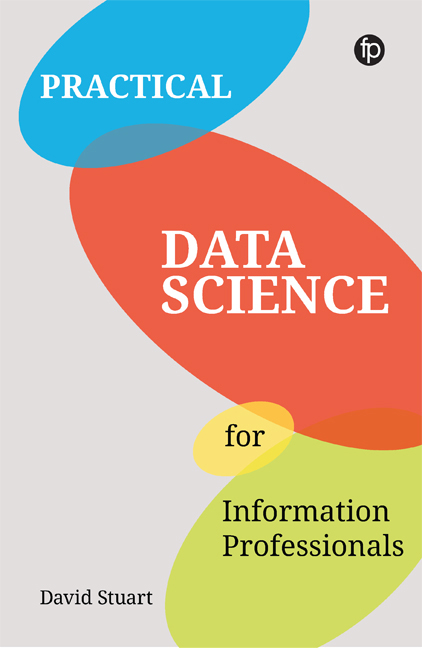Book contents
- Frontmatter
- Dedication
- Contents
- Figures
- Tables
- Boxes
- Preface
- 1 What is Data Science?
- 2 Little Data, Big Data
- 3 The Process of Data Science
- 4 Tools for Data Analysis
- 5 Clustering and Social Network Analysis
- 6 Predictions and Forecasts
- 7 Text Analysis and Mining
- 8 The Future of Data Science and Information Professionals
- References
- Appendix – Programming Concepts for Data Science
- Index
3 - The Process of Data Science
Published online by Cambridge University Press: 14 August 2020
- Frontmatter
- Dedication
- Contents
- Figures
- Tables
- Boxes
- Preface
- 1 What is Data Science?
- 2 Little Data, Big Data
- 3 The Process of Data Science
- 4 Tools for Data Analysis
- 5 Clustering and Social Network Analysis
- 6 Predictions and Forecasts
- 7 Text Analysis and Mining
- 8 The Future of Data Science and Information Professionals
- References
- Appendix – Programming Concepts for Data Science
- Index
Summary
Data science is the process by which insights may be gleaned from the data that is available. This chapter considers some of the different models that have been proposed for the data science process, and provides a five-stage procedure that can be applied by information professionals:
Frame the problem
Collect data
Transform and clean data
Analyse data
Visualise and communicate data.
As is discussed below, such a model is necessarily an oversimplification, but nonetheless provides a framework for discussing some of the steps common to many data science studies in the chapters that follow: Chapter 4 considers some of the tools available for each of these stages, before chapters 5, 6 and 7 consider some of the main data analysis techniques more closely.
This chapter starts by discussing the construction of the five-stage procedure, its advantages and (many) limitations.
Modelling the data science process
It is important to recognise that no model captures the myriad of different studies that fall under the banner of ‘data science’. Some start with a question, but others start with the data, the analysis or even a visualisation. So why bother to model the data science process? Primarily to take the complexity of the information ecosystem, which can quickly become overwhelming with its variety of data, tools and questions, and encapsulate the process so that it can be considered more holistically.
There are different ways that the data science process can be modelled. Hayashi (1996), for example, models data science as a three step process: design, collection, analysis. Springboard (2016) breaks down the collection and analysis stages further, reflecting the inevitable need to clean the data that is collected and the different objectives of exploratory and in-depth analysis. Marr (2015) and Springboard (2016) recognise the importance of communicating the findings. Data science is not about idle insights, it is about being able to turn those insights into actions. Table 3.1 summarises these three models of the data science process.
However the process is modelled, it is important to recognise that rather than comprising distinct steps the whole process is iterative, and it is often necessary to return to an earlier step.
Information
- Type
- Chapter
- Information
- Practical Data Science for Information Professionals , pp. 39 - 54Publisher: FacetPrint publication year: 2020
